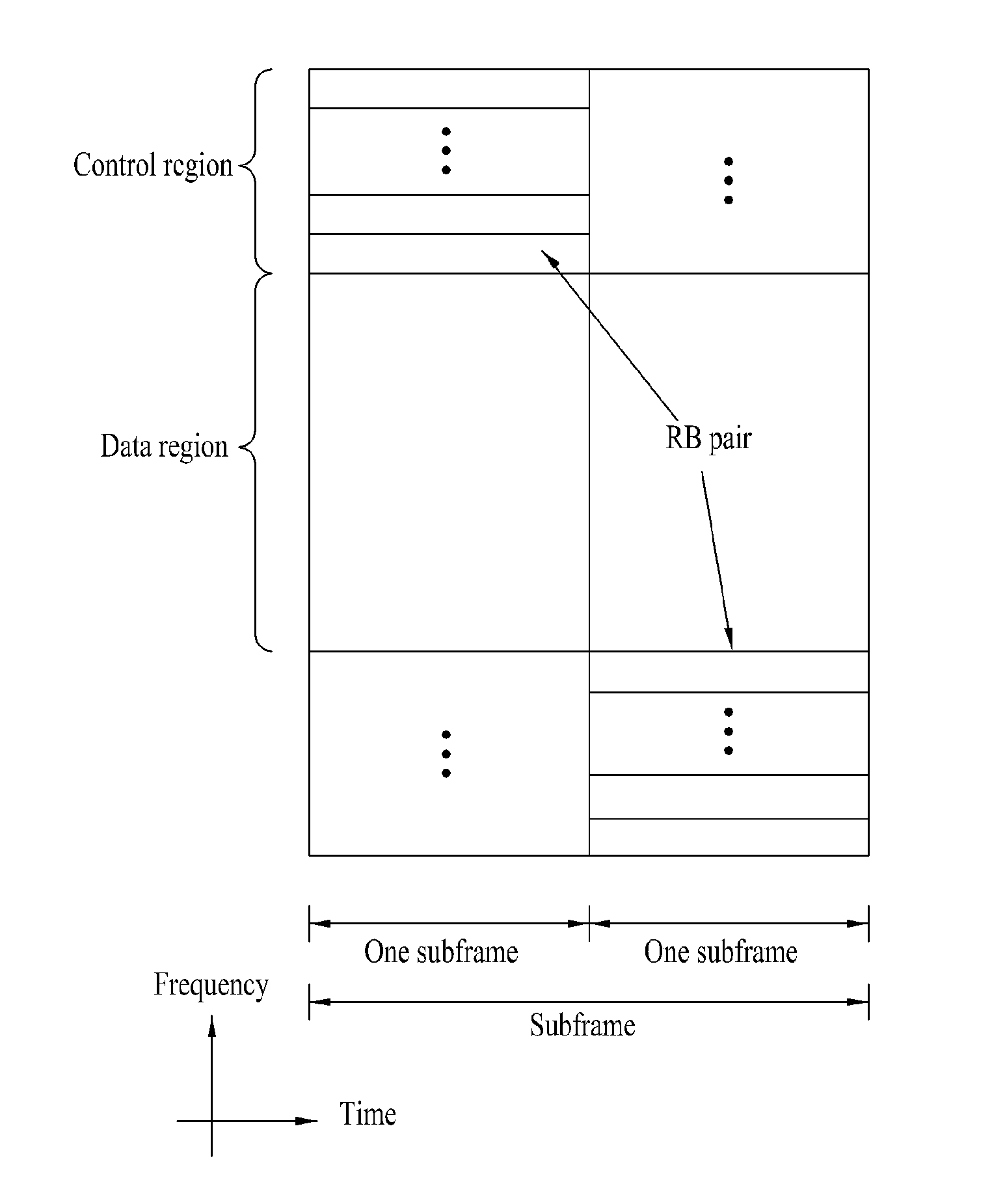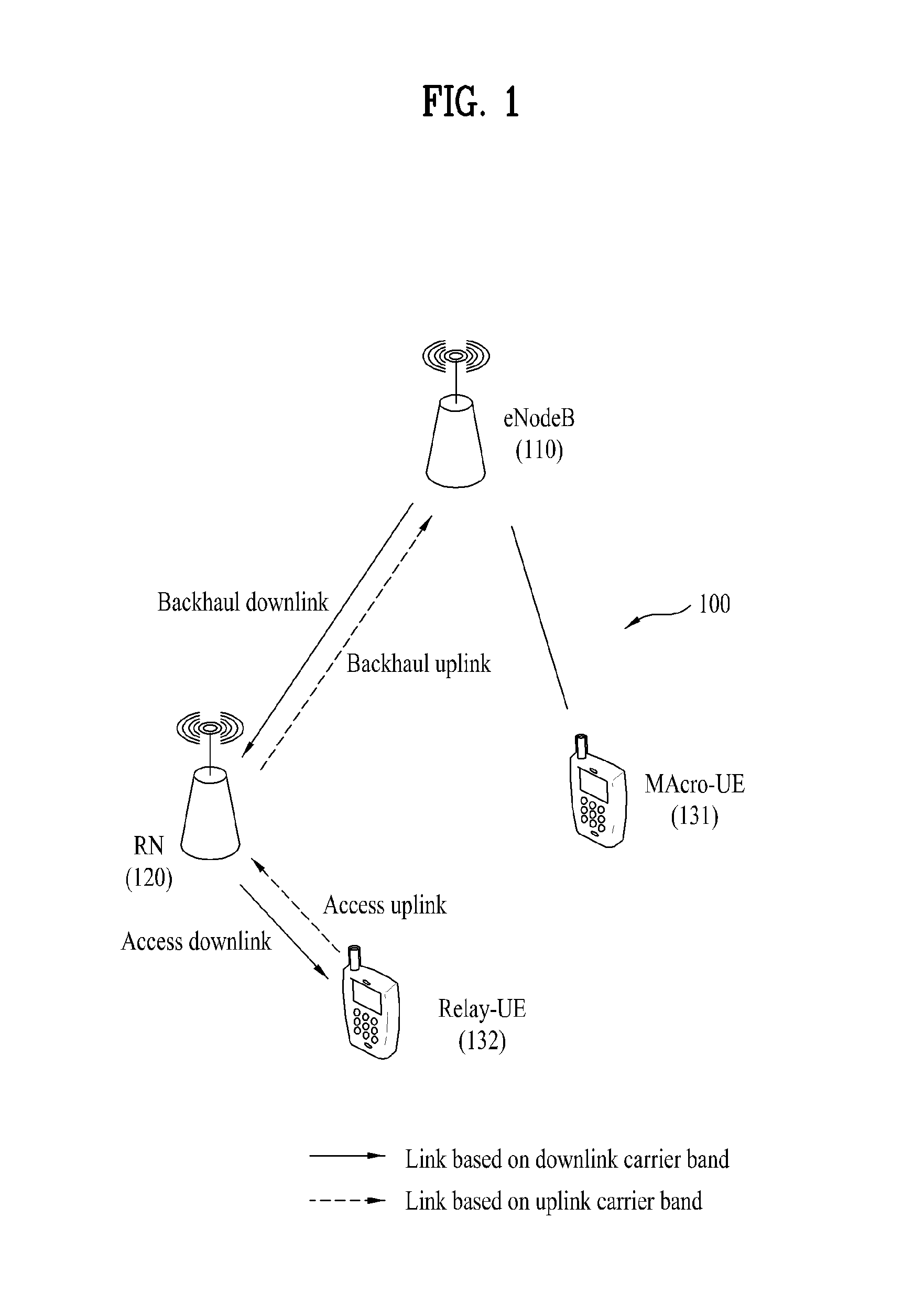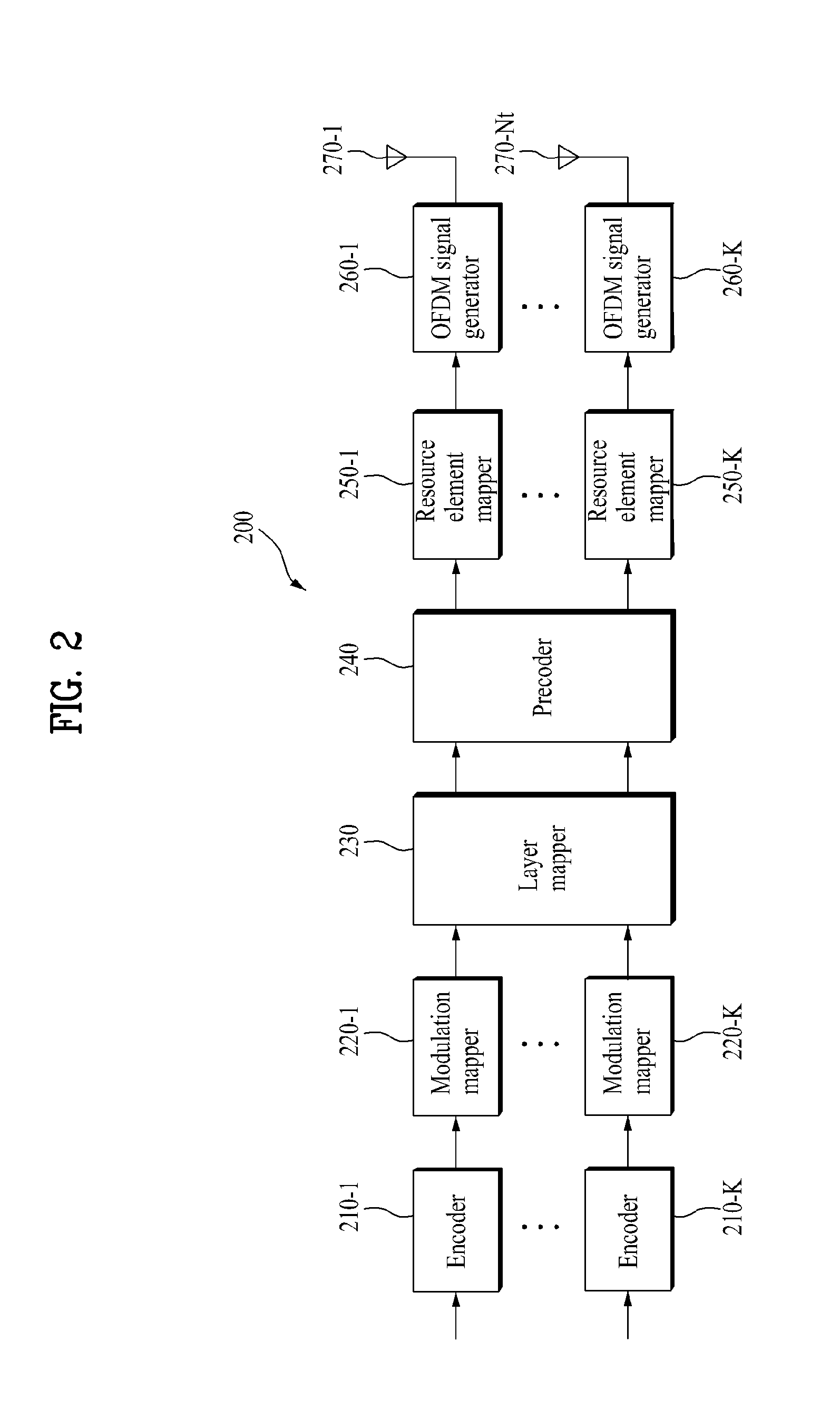Method and apparatus for transmitting multi-user MIMO reference signal in wireless communication system for supporting relay
a wireless communication system and reference signal technology, applied in the field of wireless communication systems, can solve the problems of rapid change of signal strength, and achieve the effect of normal and efficient mu-mimo operation and reducing inter-layer interferen
- Summary
- Abstract
- Description
- Claims
- Application Information
AI Technical Summary
Benefits of technology
Problems solved by technology
Method used
Image
Examples
embodiment 1
[0162]In a PRB (i.e., PRB shared between the user equipment and the relay node) to which downlink MU-MIMO transmission is applied, the originally designated ‘relay DMRS pattern’ may be applied to the relay node, and the same pattern as the ‘relay DMRS pattern’ not the ‘LTE-A user equipment DMRS pattern’ which is originally designated may be applied to the user equipment.
[0163]As described above, in case that the DMRS pattern for MU-MIMO transmission of the user equipment is configured equally to that for MU-MIMO transmission of the relay node, the DMRS for the user equipment and the DMRS for the relay node may be multiplexed on the same resource element position in accordance with a CDM mode based on OCC. Since a DMRS for any one downlink receiving entity does not collide with data of the other party, DMRS orthogonality may be maintained.
[0164]In order to set the DMRS pattern of the user equipment to the ‘relay DMRS pattern’ as above, the base station may use upper layer signaling (...
embodiment 2
[0166]In case that the relay node is located within a coverage of the base station (or cell), the same pattern as the ‘relay DMRS pattern’ not the DMRS pattern (LTE-A user equipment DMRS pattern) which is originally designated may be applied to the user equipment when the user equipment and the relay node perform downlink MU-MIMO operation.
[0167]The base station (or cell) may separately indicate to the user equipment that the relay node exists within the coverage of the base station, wherein the user equipment performs MU-MIMO operation together with the corresponding relay node. In other words, the base station (or cell) may use upper layer signaling (for example, RRC signaling) or explicitly indicate to the user equipment that the relay node exists within the base station (or cell) on the downlink channel allocation PDCCH DCI format. The user equipment signaled from the base station that the relay node exists within the coverage of the base station may identify that the ‘relay DMR...
embodiment 3
[0170]A DMRS pattern different from the originally defined DMRS pattern is not applied to the LTE-A user equipment, and based on that different DMRS patterns are applied to the LTE-A user equipment and the relay node, a method for puncturing a resource element position (or symbol) to which data and / or RS for the other party is transmitted may be applied in the same manner as the aforementioned method 1 (for puncturing, nulling or rate matching of a physical resource element described in the present invention may be used).
[0171]In more detail, in downlink subframe configuration for the LTE-A user equipment, data and / or RS transmission for the LTE-A user equipment may be punctured at the resource element position (or symbol) to which the DMRS for the relay node is transmitted. Likewise, in downlink subframe configuration for the relay node, data and / or RS transmission for the relay node may be punctured at the resource element position (or symbol) to which the DMRS for the LTE-A user ...
PUM
 Login to View More
Login to View More Abstract
Description
Claims
Application Information
 Login to View More
Login to View More - R&D
- Intellectual Property
- Life Sciences
- Materials
- Tech Scout
- Unparalleled Data Quality
- Higher Quality Content
- 60% Fewer Hallucinations
Browse by: Latest US Patents, China's latest patents, Technical Efficacy Thesaurus, Application Domain, Technology Topic, Popular Technical Reports.
© 2025 PatSnap. All rights reserved.Legal|Privacy policy|Modern Slavery Act Transparency Statement|Sitemap|About US| Contact US: help@patsnap.com



